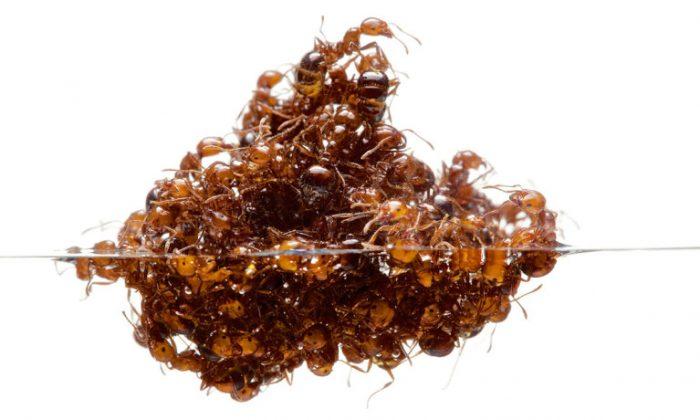A recent demonstration proved it’s possible to commanded three fully autonomous UAVs collaborating as a team. The machines flew in close formation at the same altitude, separated by approximately 50 meters as they did figure-eight patterns.
Unmanned aerial vehicles (UAVs) typically fly alone with a team of ground operators controlling their activities through teleoperation or waypoint-based routing. But one aircraft can only carry so many sensors, which limits its capabilities. That’s one reason why a fleet of autonomous aircraft can be better than one flying alone.
“For autonomous systems to scale effectively, future systems will need the ability to perform with a higher level of autonomy,” says Lora Weiss, who leads Georgia Tech Research Institute’s UAV research.
“Human operators must be able to provide high-level task descriptions, allowing the systems to figure out for themselves how to dynamically form teams and autonomously collaborate to complete tasks.”
The team operated the three UAVs over the skies of Fort Benning near Columbus, Georgia. A single plane was initially designated as the leader and commanded to fly autonomous orbits. The two “follower” UAVs joined the orbits, flying with rotational offsets of 15 and 30 degrees, respectively, from the leader.
“There are logistical challenges with quickly getting multiple planes in the air,” says Charles Pippin, a senior research scientist who led development of the autonomy algorithms.
The lead UAV shared its current position with the follower UAVs several times per second, allowing the followers to calculate the control changes necessary to reach the desired position.
The followers also used the leader’s information to send commands to their on-board autopilots, which adjusted the controls and throttle for each aircraft. The autonomous algorithms and applications are general enough that they can be used with different UAVs and autopilot systems.
The aircraft in the Fort Benning demonstration were quarter-scale Piper Cub airframes with a wingspan of approximately eight feet. They are able to carry a mission computer, autopilot system, and sensor payloads.
Hurricanes, Wildfires, Deliveries
Autonomous systems working in teams have numerous future applications designed to improve lives and reduce costs. For example, multiple UAVs could provide several different camera angles while searching for a missing person. While surveying hurricanes, one plane could carry a sensor to check wind speed in one area while another UAV measures energy in another. The same is true for wildfires. One vehicle could determine the size of the blaze while another uses different sensors to measure the heat or direction of the inferno.
“Multiple planes working together also provides flexibility if one aircraft fails or is diverted somewhere else during a mission,” explains Pippin.
As the use of unpiloted systems becomes more prevalent, increasing levels of autonomy will become necessary to improve the safety, robustness, and quality of these systems.
This research has the potential to positively impact many different industries, including crop inspection and spraying, delivery of goods, wildlife management, and utility inspection.
This and a previous project are part of a Memorandum of Understanding that Georgia Tech Research Institute has with the Army post to conduct tests of advanced technologies.
Source: Georgia Tech. Republished from Futurity.org under Creative Commons License 3.0.



